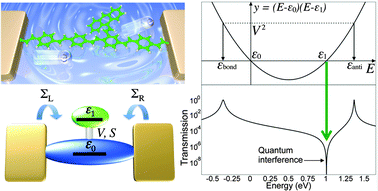Quantum interference (QI) effects in molecular devices have drawn increasing attention over the past years due to their unique features observed in the conductance spectrum. For the further development of single molecular devices exploiting QI effects, it is of great theoretical and practical interest to develop simple methods controlling the emergence and the positions of QI effects like anti-resonances or Fano line shapes in conductance spectra. In this work, starting from a well-known generic molecular junction with a side group (T-shaped molecule), we propose a simple graphical method to visualize the conditions for the appearance of quantum interference, Fano resonances or anti-resonances, in the conductance spectrum. By introducing a simple graphical representation (parabolic diagram), we can easily visualize the relation between the electronic parameters and the positions of normal resonant peaks and anti-resonant peaks induced by quantum interference in the conductance spectrum. This parabolic model not only can predict the emergence and energetic position of quantum interference from a few electronic parameters but also can enable one to know the coupling between the side group and the main conduction channel from measurements in the case of orthogonal basis. The results obtained within the parabolic model are validated using density-functional based quantum transport calculations in realistic T-shaped molecular junctions.

You have access to this article
 Please wait while we load your content...
Something went wrong. Try again?
Please wait while we load your content...
Something went wrong. Try again?


 Please wait while we load your content...
Please wait while we load your content...